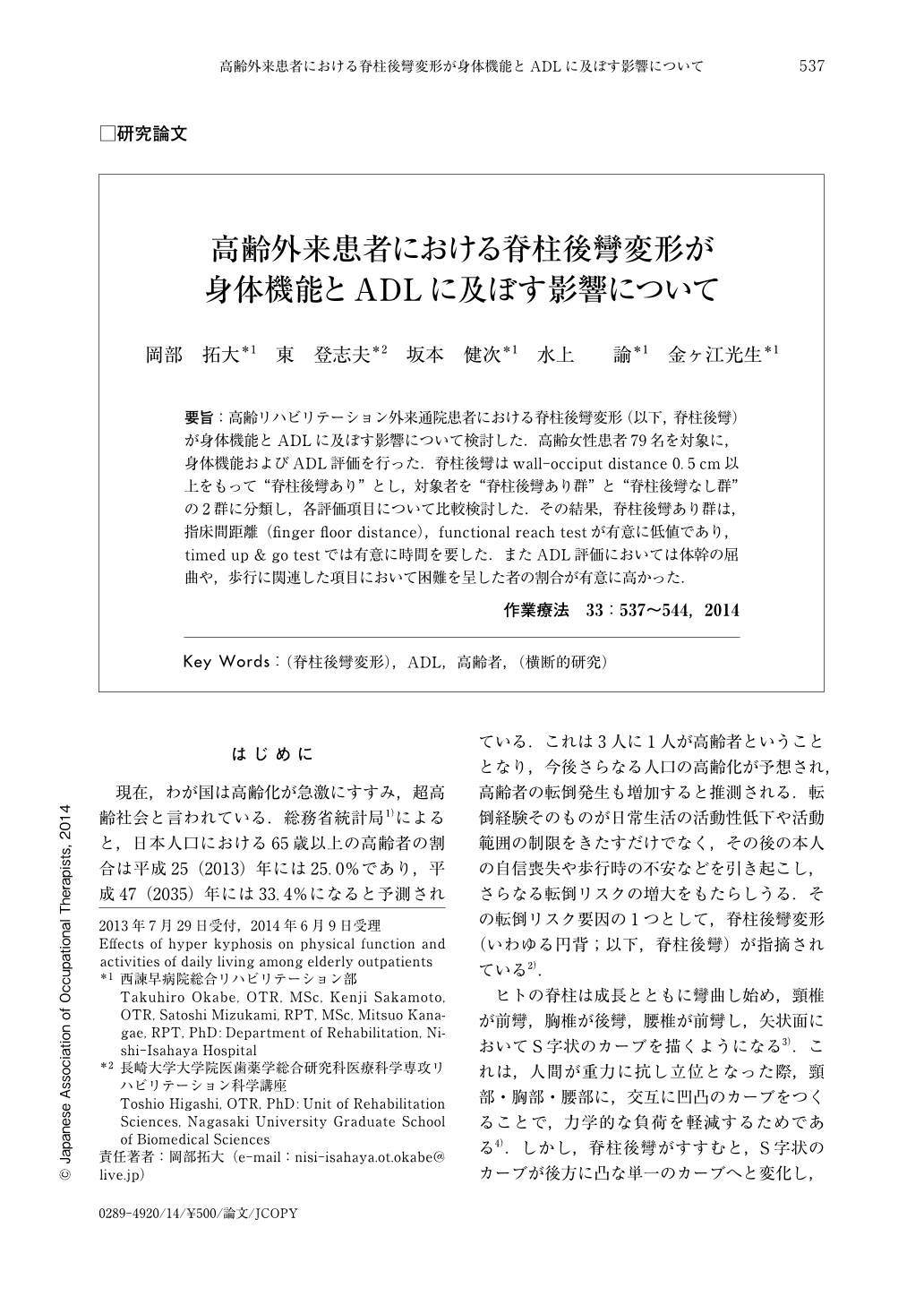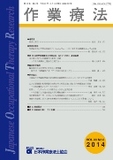Japanese
English
- 販売していません
- Abstract 文献概要
- 1ページ目 Look Inside
- 参考文献 Reference
要旨:高齢リハビリテーション外来通院患者における脊柱後彎変形(以下,脊柱後彎)が身体機能とADLに及ぼす影響について検討した.高齢女性患者79名を対象に,身体機能およびADL評価を行った.脊柱後彎はwall-occiput distance 0.5cm以上をもって“脊柱後彎あり”とし,対象者を“脊柱後彎あり群”と“脊柱後彎なし群”の2群に分類し,各評価項目について比較検討した.その結果,脊柱後彎あり群は,指床間距離(finger floor distance),functional reach testが有意に低値であり,timed up & go testでは有意に時間を要した.またADL評価においては体幹の屈曲や,歩行に関連した項目において困難を呈した者の割合が有意に高かった.
The purpose of this study was to evaluate the association between hyper kyphosis and physical function and activities of daily living (ADL) among elderly outpatients of rehabilitation. Seventy-nine elderly female outpatients (aged 66-88 years) completed a survey on physical function and ADL. Hyper kyphosis was defined as wall-occiput distance≧0.5 cm. The Mann-Whitney U test for physical function and the chi-square test for ADL were used to examine differences between women with and without hyper kyphosis. Based on the functional reach test, finger-floor distance, and timed up & go test, participants with hyper kyphosis showed significantly poorer physical function than those without hyper kyphosis. Furthermore, performing the following ADL (getting in or out of a car, bending over or picking up a lightweight object, walking a distance of 100 m on a level surface, climbing 10 steps without stopping, and alighting 10 steps) were significantly more difficult for those with hyper kyphosis that for those without hyper kyphosis.

Copyright © 2014, Japanese Association of Occupational Therapists. All rights reserved.


